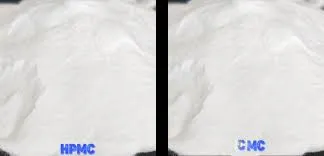
Nov . 22, 2024 22:44 Back to list
hydroxyethyl cellulose cas no
Hydroxyethyl cellulose (HEC) is a non-ionic cellulose ether derived from cellulose, a natural polymer obtained from plant cell walls. It is widely recognized in various industries for its diverse properties and applications, primarily due to its excellent water-solubility and thickening ability. Identified by its CAS number 9004-62-0, HEC plays a crucial role in formulating products across cosmetics, pharmaceuticals, food, and industrial applications.
One of the notable features of HEC is its ability to form viscous solutions when dissolved in water. This property makes it an ideal thickening agent in personal care products such as lotions, creams, and shampoos. By improving the texture and stability of these formulations, HEC enhances user experience and product effectiveness. Furthermore, its non-toxic nature makes it safe for use in cosmetics, aligning with consumer demand for safer and more natural ingredients.
In the pharmaceutical sector, hydroxyethyl cellulose serves as a binder in tablet formulations and a thickener in ointments and gels. Its ability to retain moisture contributes to extended shelf life and improved stability of these products. Additionally, HEC is used in controlled-release drug formulations, facilitating the gradual release of active ingredients, which can enhance therapeutic efficacy.
In food applications, HEC is utilized as a stabilizer and thickener in various processed products. It improves texture and mouthfeel in foods such as sauces, dressings, and dairy products. Its use in food is crucial for maintaining consistency, allowing for a pleasant taste and enhanced palatability.
hydroxyethyl cellulose cas no

Moreover, HEC is increasingly being adopted in the construction sector. It is employed as an additive in mortar, cement, and tile adhesives, providing improved workability and adhesion. The water-retention properties of HEC help prevent the rapid drying of materials, allowing for better application and longer-lasting results.
As environmental concerns rise, hydroxyethyl cellulose is gaining attention for its biodegradable properties. As a natural polymer, it poses less risk to ecosystems compared to synthetic alternatives. This characteristic is particularly appealing to industries looking to adopt more sustainable practices.
In conclusion, hydroxyethyl cellulose (CAS No. 9004-62-0) exemplifies a versatile ingredient with applications spanning multiple industries. Its unique combination of thickening, stabilizing, and binding properties make it an essential component in many formulations, driving innovation while meeting consumer demands for safety and sustainability. As industries continue to evolve, HEC will likely maintain its significant role in future developments.
-
Versatile Hpmc Uses in Different Industries
NewsJun.19,2025
-
Redispersible Powder's Role in Enhancing Durability of Construction Products
NewsJun.19,2025
-
Hydroxyethyl Cellulose Applications Driving Green Industrial Processes
NewsJun.19,2025
-
Exploring Different Redispersible Polymer Powder
NewsJun.19,2025
-
Choosing the Right Mortar Bonding Agent
NewsJun.19,2025
-
Applications and Significance of China Hpmc in Modern Industries
NewsJun.19,2025







